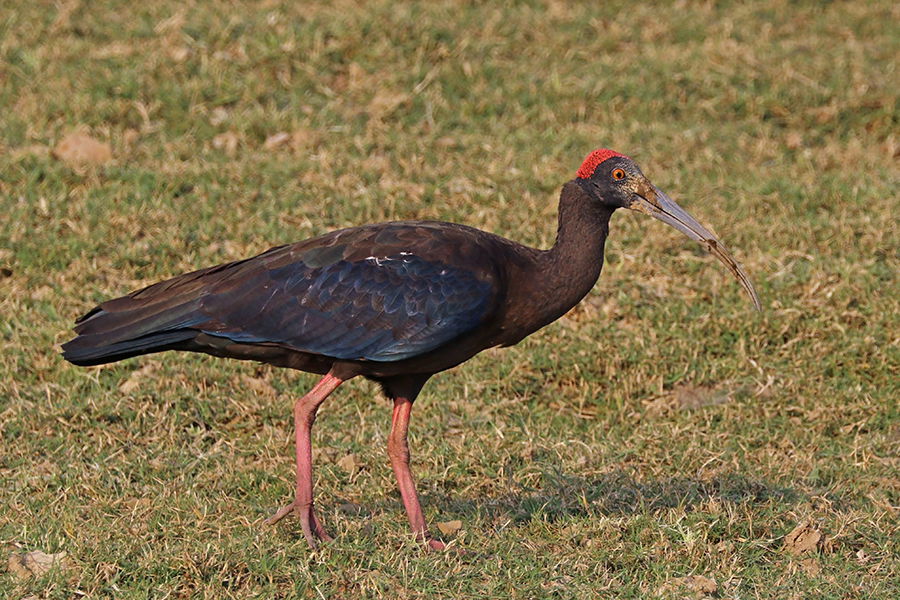Searching for Waterfowl
RobertJBanach, CC BY-SA 4.0 via Wikimedia Commons
Threskiornithidae
by Inspector Barry Mins on November 22, 2022Hey kids, welcome back to our series on the mysteries of created kinds.

Last week, we met some arboreal iguanas. This week, we go from lizards to birds and are no longer limited to Central and South America.
These birds are known as waterfowl, preferring wetlands and other water-based habitats.1 However, they do not stay on the water permanently. Instead, they roost off the water, in trees and on housetops.2 They are adaptable, even using non-native trees for roosting and breeding.3 They tend to spend time in groups and are quite social with each other. Some are so comfortable with humans that they have become pests.4
This kind loves to munch on invertebrates, both aquatic and terrestrial.5 They also enjoy small fish.6 They prefer high-carbohydrate and protein foods over high-lipid foods.7 They are comfortable adjusting their diet to adapt to available food sources.8 They are more than happy to eat human scraps as well.9 They forage in groups, both on land and in the water.10 Some species have the ability to detect the movements of underground invertebrates using their bills.11
This kind breeds in colonies, with chicks making up only a small percentage of the population.12 Usually adults lay 2–4 eggs, but normally only 1–3 of these fledge.13 The eggs are incubated for approximately a month, and the chicks fledge approximately two months later.14
Has anyone figured it out yet? This week’s kind is the Threskiornithidae—the ibises. Ibises were sacred birds in ancient Egypt and the word “ibis” derives from the ancient Egyptian word for these birds. Stay tuned for next week when we start looking for a large, well-known kind of land mammal.

Charles J. Sharp, CC BY-SA 4.0, via Wikimedia Commons
Try out this fun crossword!
Clue
Your clue for the week is:
This kind is known for its huge ears and massive tusks.
Ask a Question
Have you ever had a question about created kinds but didn’t know who to ask? Have you ever wanted to learn more about your favorite kind? Well, now you can! You can ask me, Inspector Barry Mins, a question! Have your parents help you fill out this form, and you might get your question answered in my column! If you have any questions about created kinds, feel free to send them my way!
Footnotes
- H. Ameta, V. K. Koli, S. Kittur, and K. S. G. Sundar, “Is the Red-naped Ibis Pseudibis papillosa a ‘waterbird’? Distribution, abundance, and habitat use in landscapes with two different dominant land uses in Udaipur district, Rajasthan, India,” Stork Ibis and Spoonbill Conservation 4 (2022).
- V. K. Koli, S. Chaudhary, and K. S. G. Sundar, “Roosting Ecology of Black-Headed Ibis (Threskiornis melanocephalus) in Urban and Rural Areas of Southern Rajasthan, India,” Waterbirds 42, no.1 (2019): 51–60.
- J. R. Rau, V. Raimilla, and E. J. Niklitschek, “Use of exotic conifers as nesting sites by Black-faced Ibis (Theristicus melanopis melanopis) in an urban area of southern Chile,” Studies on Neotropical Fauna and Environment 50, no. 2 (2015): 130–136.
- J. M. Martin, K. French, and R. E. Major, “The pest status of Australian white ibis (Threskiornis molucca) in urban situations and the effectiveness of egg-oil in reproduction control,” Wildlife Research 34 (2007): 319–324.
- R. Carrick, “The food and feeding habits of the Straw-necked Ibis Threskiornis spinicollis (Jameson), and the White Ibis, T. molucca (Cuvier) in Australia,” CSIRO Wildlife Research 4, no. 1 (1959): 69–92.
- E. Aguilera, C. Ramo, and C. de le Court, “Food and Feeding Sites of the Eurasian Spoonbill (Platalea leucorodia) in Southwestern Spain,” Colonial Waterbirds 19 (1996): 159–166.
- S. C. P. Coogan, G. E. Machovsky-Capuska, A. M. Senior, J. M. Martin, R. E. Major, and D. Raubenheimer, “Macronutrient selection of free-ranging urban Australian white ibis (Threskiornis moluccus),” Behavioral Ecology 28, no. 4 (2017): 1021–1029.
- N. J. Dorn, M. I. Cook, G. Herring, R. A. Boyle, J. Nelson, and D. E. Gawlick, “Aquatic prey switching and urban foraging by the White Ibis Eudocimus albus are determined by wetland hydrological conditions,” Ibis 153, (2011): 323–335.
- L. Calle and D. E. Gawlick, “Anthropogenic food in the diet of the Sacred Ibis (Threskiornis aethiopicus), a non-native wading bird in southeastern FL, USA,” Florida Field Naturalist 39, no. 1 (2011): 1–34.
- J. A. Amat and F. D. Rilla, “Foraging Behavior of White-Faced Ibises (Plegadis chihi) in Relation to Habitat, Group Size, and Sex,” Colonial Waterbirds 17, no. 1 (1994): 42–49.
- S. J. Cunningham, I. Castro, T. Jensen, and M. A. Potter, “Remote touch prey-detection by Madagascar Crested Ibises Lophotibis cristata urschi,” Journal of Avian Biology 41 (2010): 350–353.
- S. Chaudhury and V. K. Koli, “Population status, habitat preference, and nesting characteristics of black-headed ibis Threskiornis melanocephalus Latham, 1790 in southern Rajasthan, India,” Journal of Asia-Pacific Biodiversity 11, no. 2 (2018): 223–228.
- X. Yu, X. Lia, and Z. Huo, “Breeding ecology and success of a reintroduced population of the endangered Crested Ibis Nipponia nippon,” Bird Conservation International 25 (2015): 207–219.
- N. Luzuriaga, D. Cuichan, M. da Costa, and N. Reyes, “Observations on the breeding biology of the Andean Ibis (Theristicus branickii) in Ecuador,” Ornithology Research 29 (2021): 22–28.
- © 2024 Answers in Genesis
- Privacy Policy
- Contact
- About
